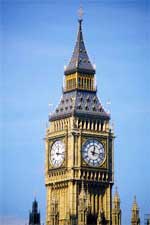 The International Earth Rotation and Reference Systems Service (IERS), based in Paris, has decided to add an additional “leap” second to the 24 hours of December 31, 2005 (GMT), resulting in a total of 31,556,927 seconds for the year 2005 instead of the usual 31,556,926 seconds.
The International Earth Rotation and Reference Systems Service (IERS), based in Paris, has decided to add an additional “leap” second to the 24 hours of December 31, 2005 (GMT), resulting in a total of 31,556,927 seconds for the year 2005 instead of the usual 31,556,926 seconds.
Historically, time was measured using water clocks, pendulum clocks, or solar clocks. However, since 1950, IERS experts have employed a more efficient tool for this purpose: atomic clocks, which can measure time with remarkable precision—deviating by just one second over 50 million years.
The International Bureau of Weights and Measures (BIPM), headquartered in France, has established a system of 250 atomic clocks distributed around the world, which determines International Atomic Time (TAI) and Coordinated Universal Time (UTC). While TAI is calculated based on machinery, UTC is derived from the cycles of the Sun’s rise and set.
Astronomers note that due to tidal forces and the Moon’s influence, the Earth is gradually slowing down and losing energy. This discrepancy, though minimal, is sufficient to create a difference between TAI and UTC, necessitating occasional adjustments to time. The adjustment on the night of December 31, 2005, marks the 22nd time adjustment and may be the last in history. The International Telecommunication Union (ITU) is expected to consider the cessation of “leap seconds” in August 2006.


















































